 "Tim (Fractal Footwork)" (fractalfootwork)
"Tim (Fractal Footwork)" (fractalfootwork)
02/19/2014 at 20:09 • Filed to: Technically Formula 1, F1 Technical on Oppo, Bahrain Testing, Formula 1, F1, OppositeLock
 5
5
 7
7
 "Tim (Fractal Footwork)" (fractalfootwork)
"Tim (Fractal Footwork)" (fractalfootwork)
02/19/2014 at 20:09 • Filed to: Technically Formula 1, F1 Technical on Oppo, Bahrain Testing, Formula 1, F1, OppositeLock |  5 5
|  7 7 |
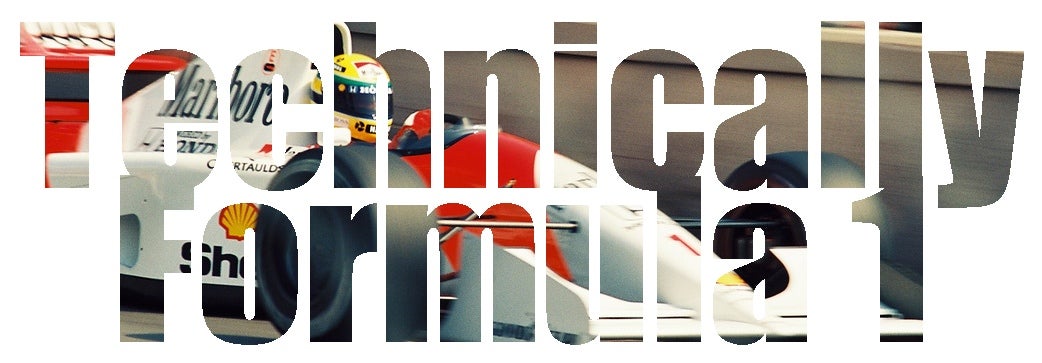
Technical innovation is what makes Formula 1 so different from any other form of racing. The on track action is as much played out by the engineers and aerodynamicists as it is the drivers. We are here to admire, study, and discuss this beauty that exists on the ragged edge of what we think is possible, or at least what we thought was possible.
For more technical intrigue, be sure to check out this year's !!!error: Indecipherable SUB-paragraph formatting!!! !!!error: Indecipherable SUB-paragraph formatting!!! !!!error: Indecipherable SUB-paragraph formatting!!! .
!!! UNKNOWN CONTENT TYPE !!!
Discussions and questions are welcomed and encouraged in the comments section below.
Testing Day 5 - Bahrain
!!! UNKNOWN CONTENT TYPE !!!
Red Bull
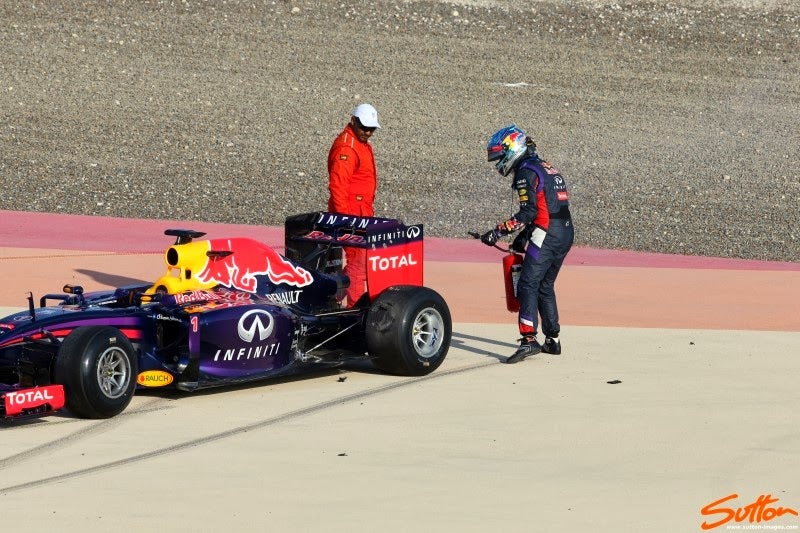
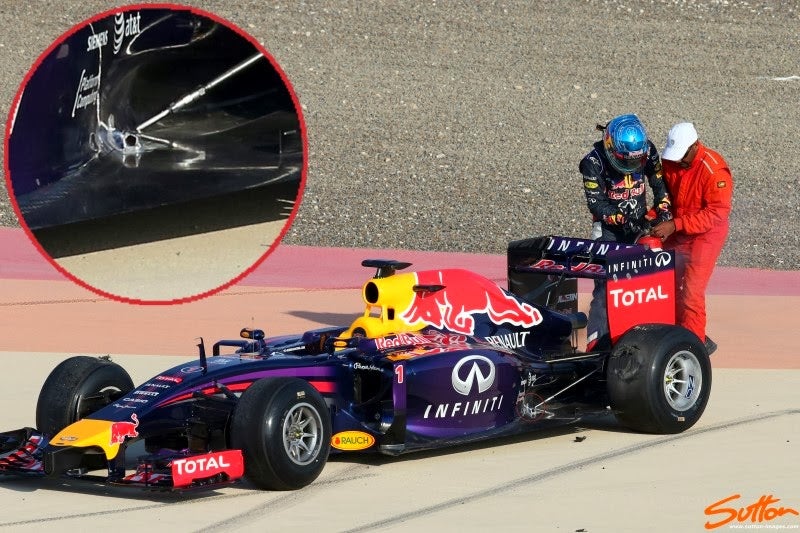
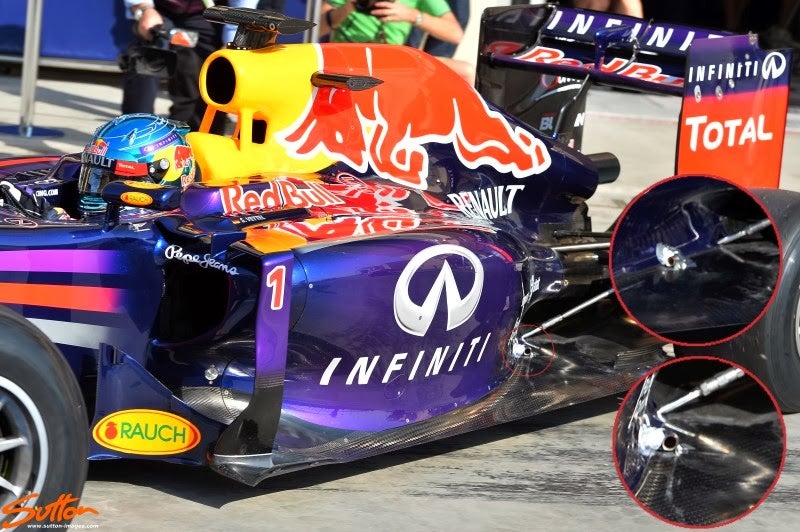
Anyone know what this leads to?
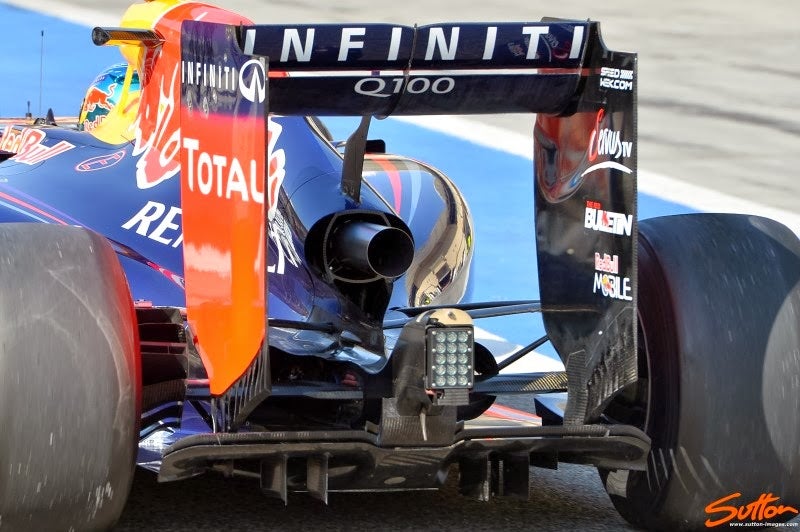
RB10 rear end detail. Notice that the rear wing support on the centerline mounts atop the engine cover bodywork instead of running all the way down to the floor, like other teams.
Mercedes
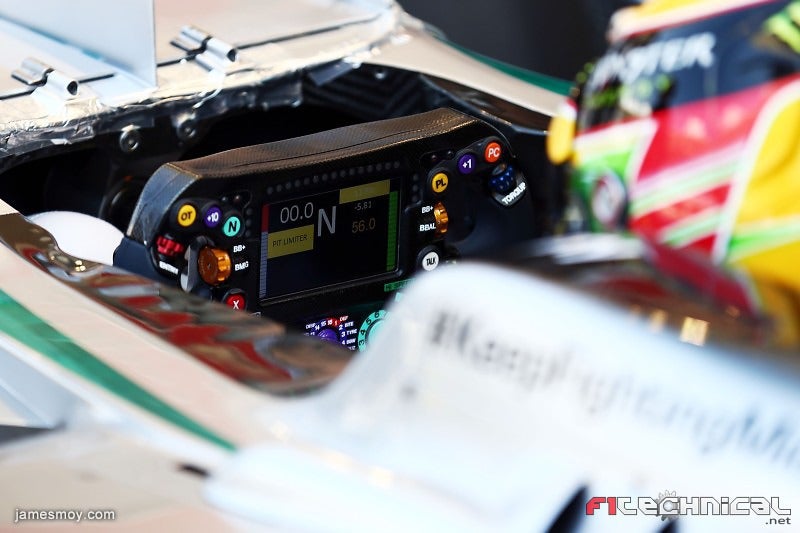
Mercedes are running one of McLaren's new led displays that are able to display much more information than a series of colored LED lights.
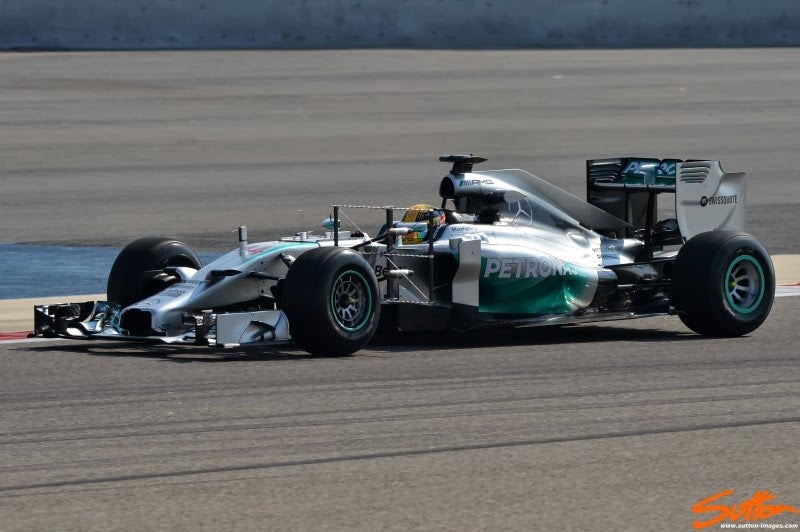
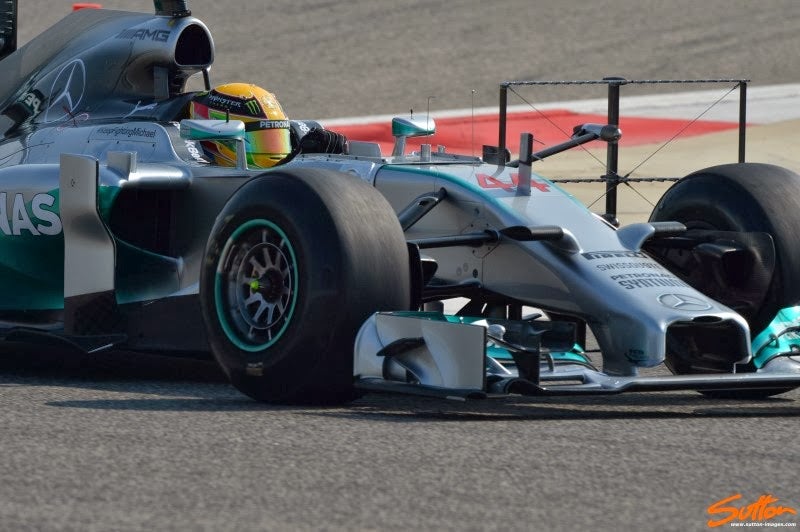
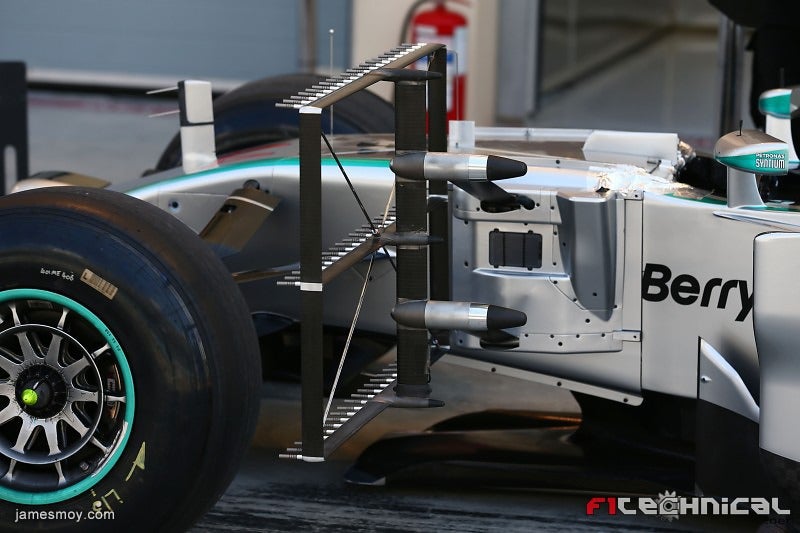
Mercedes W05 pitot tube testing.
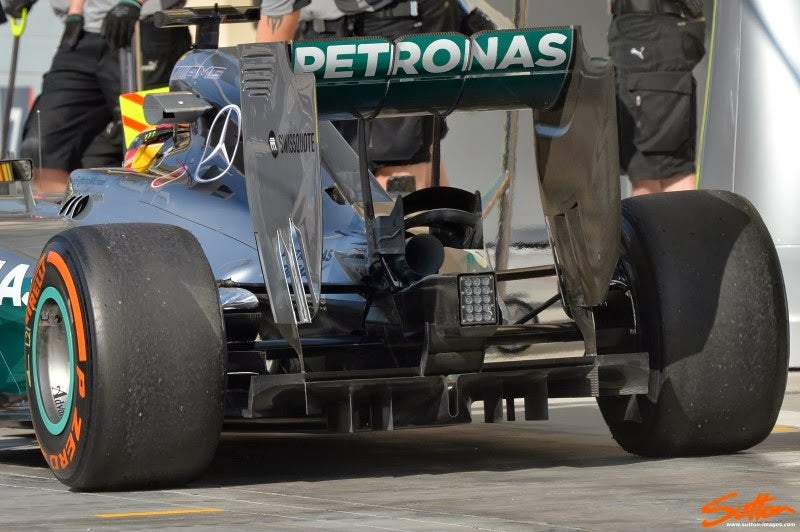
Note the tire wake slots cut into the rear wing endplates. The monkey seat (Y75 winglet) on the W05 also interestingly sports a duel-element design (2 wings)
Ferrari
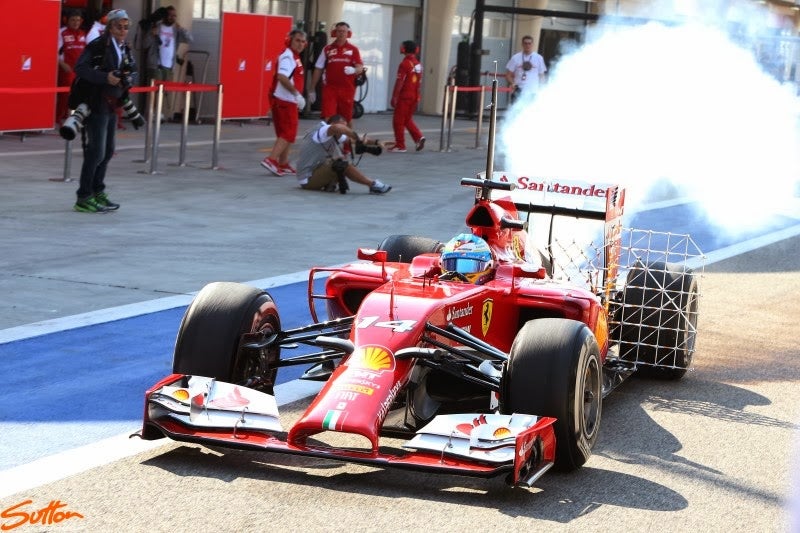
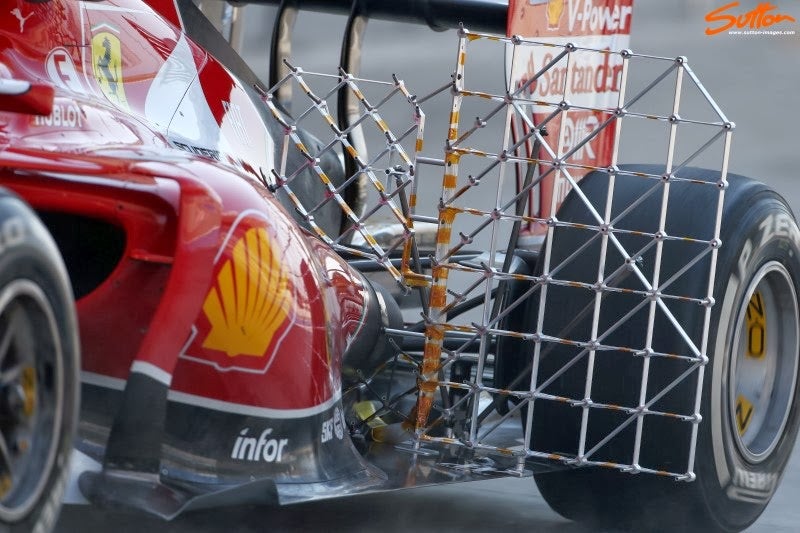
Ferrari pitot tube testing their F14T with a more complicated array than seen earlier on the W05. Interestingly, they've extended their standard metal array to form around the limits of the body work
Lotus
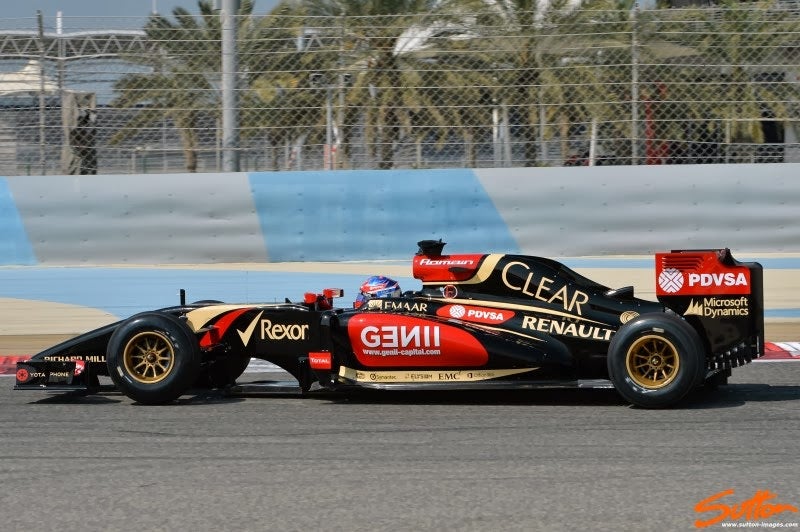
The E22 looking a bit different in profile compared to the other teams' chassis.
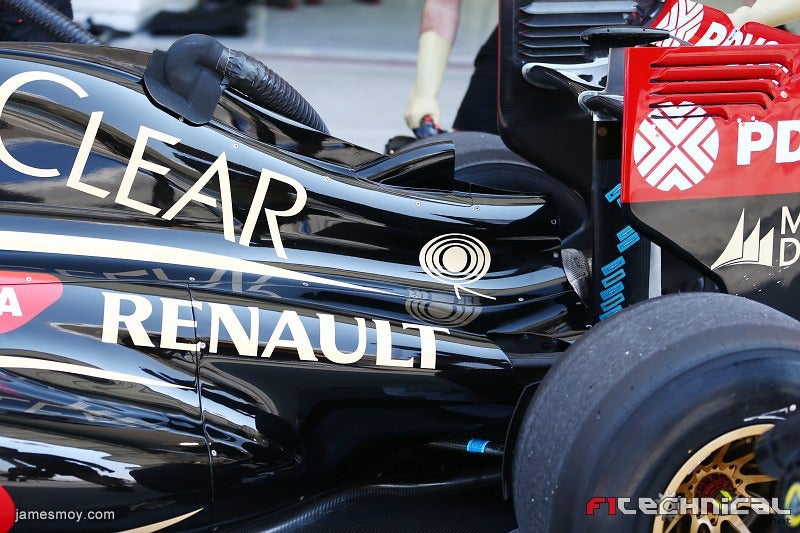
Note the outlet on the backside of the engine cover, and the inlet being fed by tube.
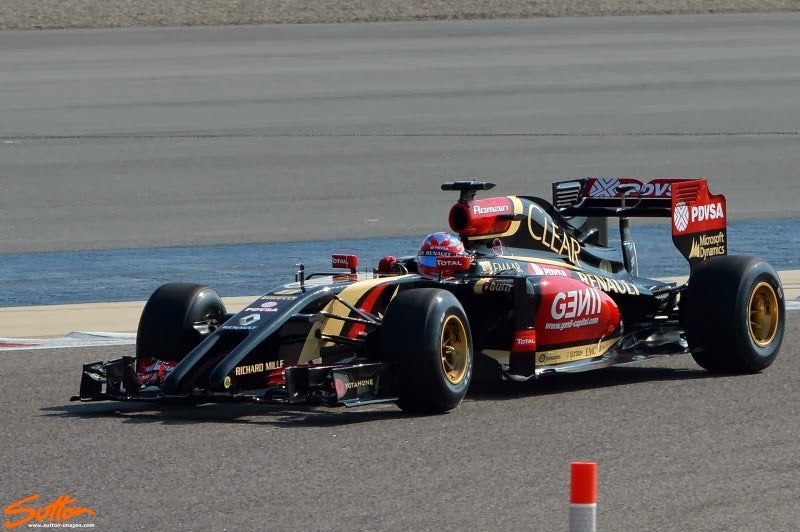
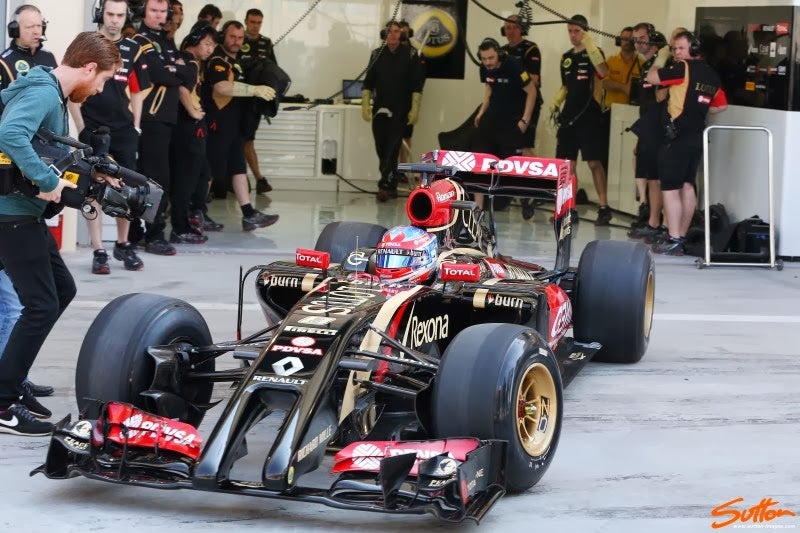
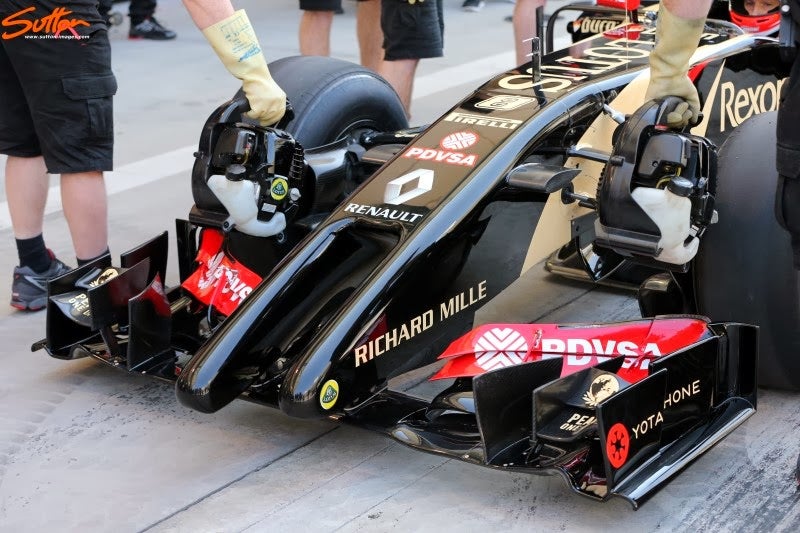
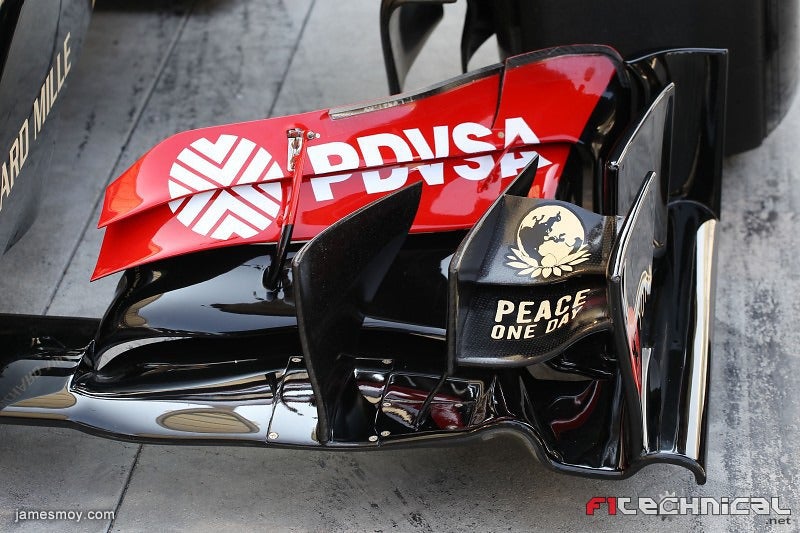
Ignore the bold nose for a second, and focus in on the E22's front wing. The main element is cut almost in line with the sidewall of the tire it precedes; this may possibly be creating a vortex of some sort that may or may not work with the brake duct inlets.
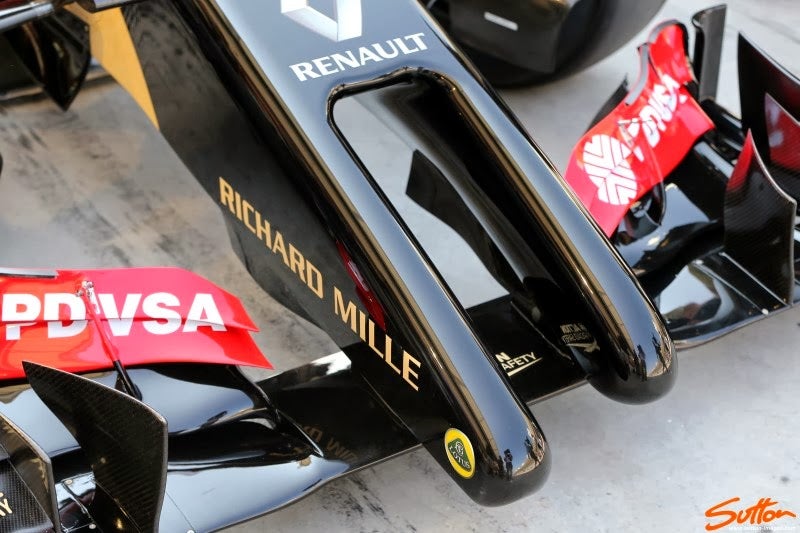
The E22 runs possibly the most controversial nose of 2014. The idea is that the nose sits in the same space as would the front wing supports; this minimizes the loss of air flowing underneath the car. They made a second "fake" nose to evoke a symmetrical flow of air that would not upset the aero balance across the chassis.
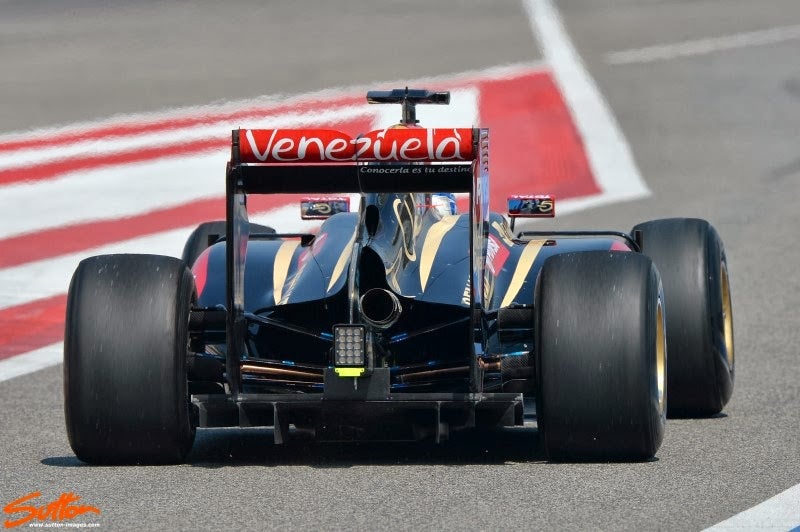
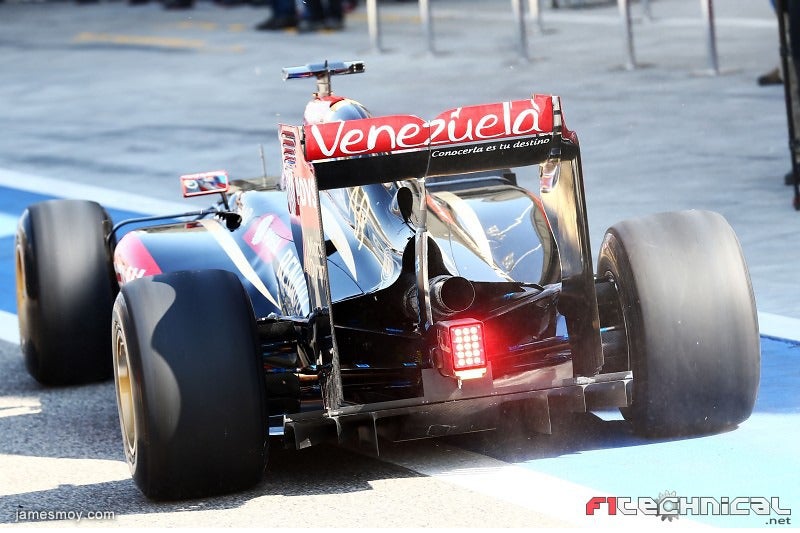
E22 rear end detail. Note the asymmetric rear wing support on the center line.
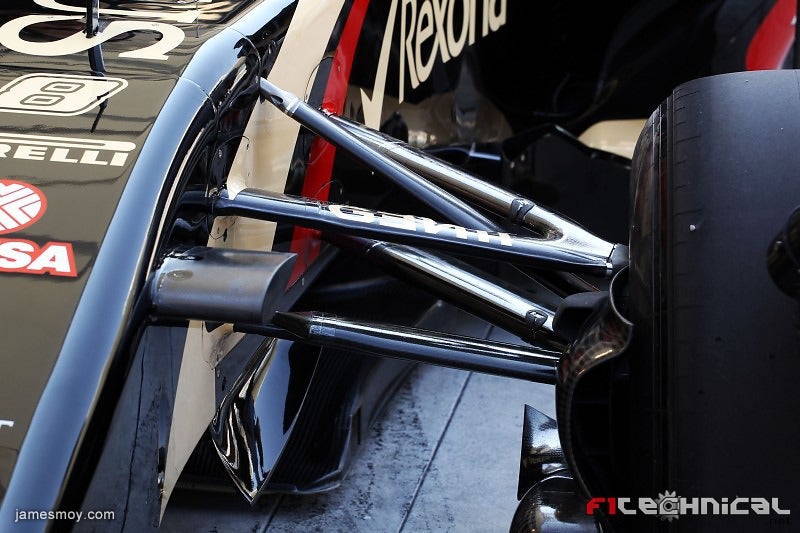
E22 front suspension detail.
McLaren
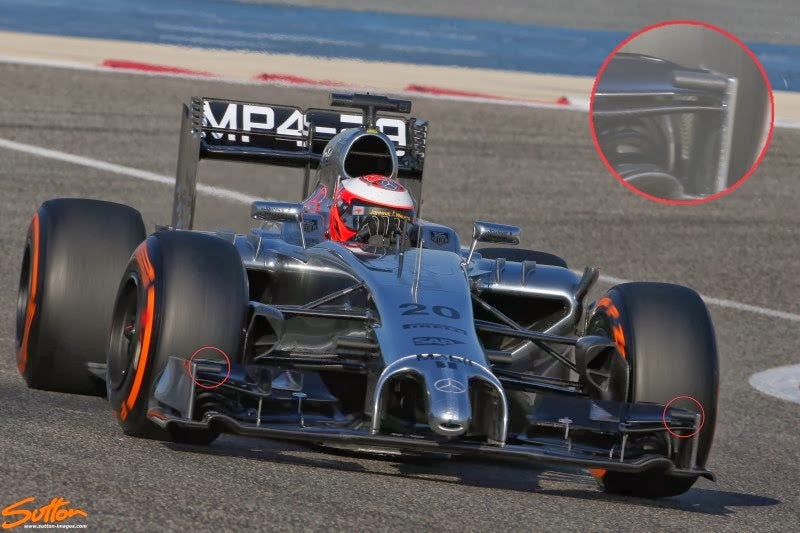
The highlighted circle is pointing two winglets on the front wing; these most likely are tire temperature sensors.
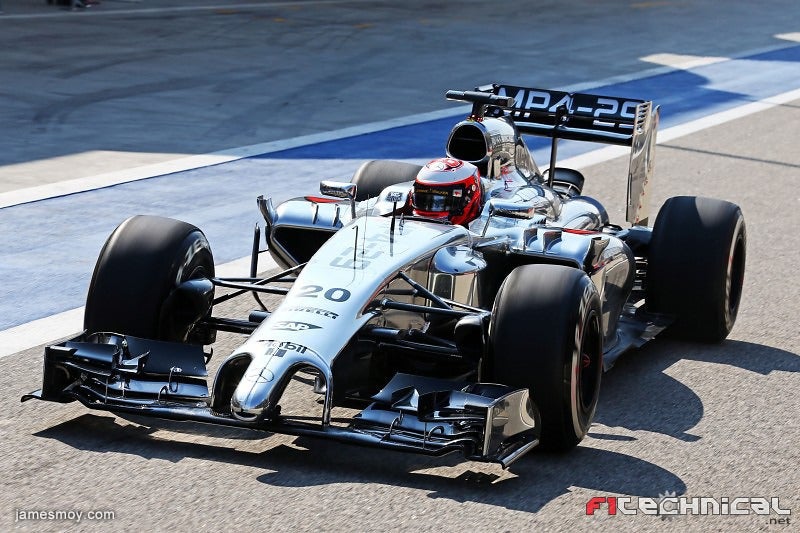
The McLaren chassis is seen here running a very big bulge on the side of the nose where the driver's legs are housed.
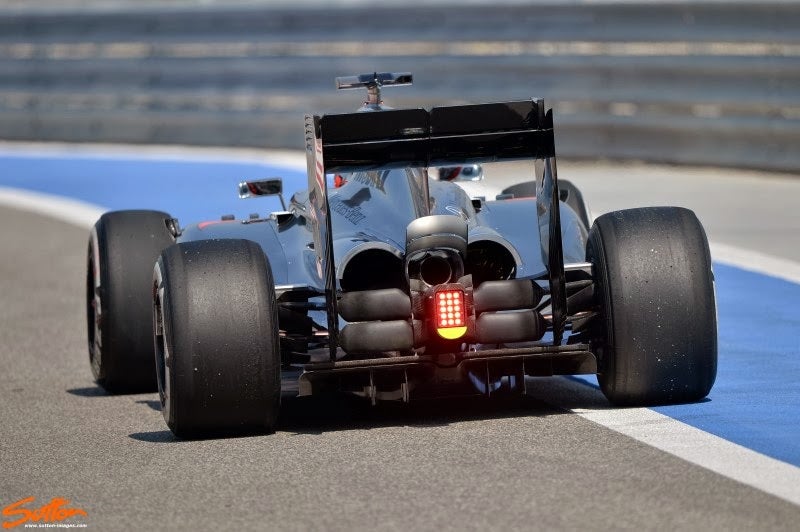
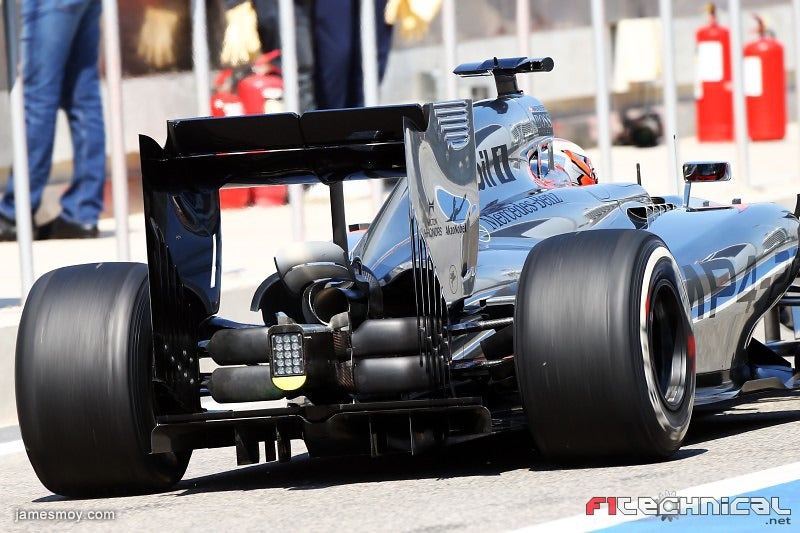
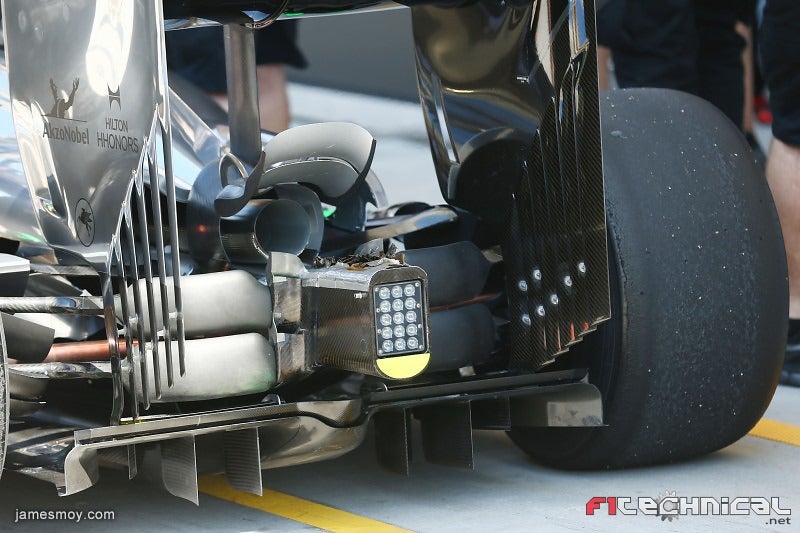
McLaren still running the Wishbone Wings (or as I like to call them, !!!error: Indecipherable SUB-paragraph formatting!!! ) that created quite a stir in Jerez three weeks ago. The MP4-29 also sports an elongated gurney-style flap on the top of the diffuser to help and create more of an upwash behind the clever suspension.
!!! UNKNOWN CONTENT TYPE !!!
Also note the dual element Monkey Seat.
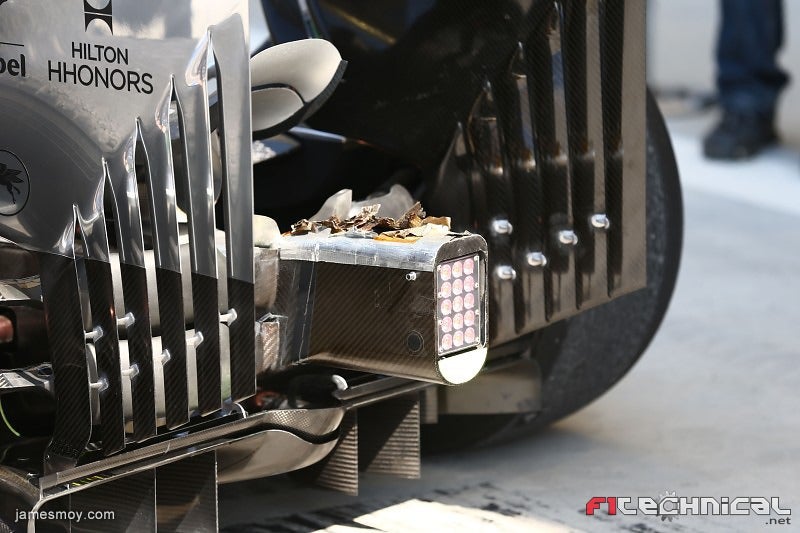
Not sure what this flakey stuff is.
Sauber
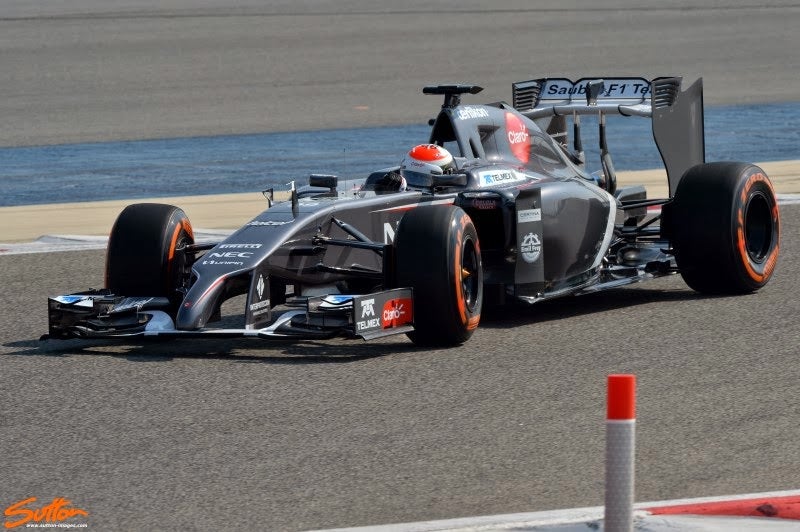
The C33 can now be seen running upright sidepod airflow conditioners that were curiously absent during the Jerez test.
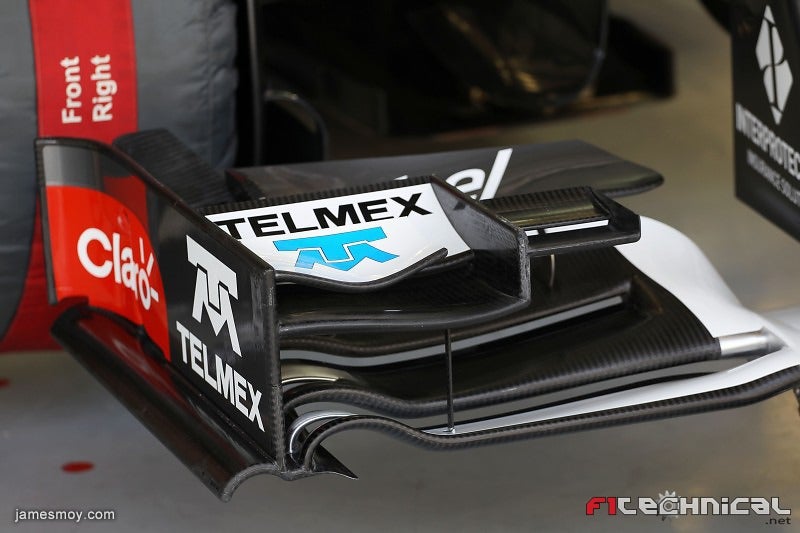
C33 front-wing detail.
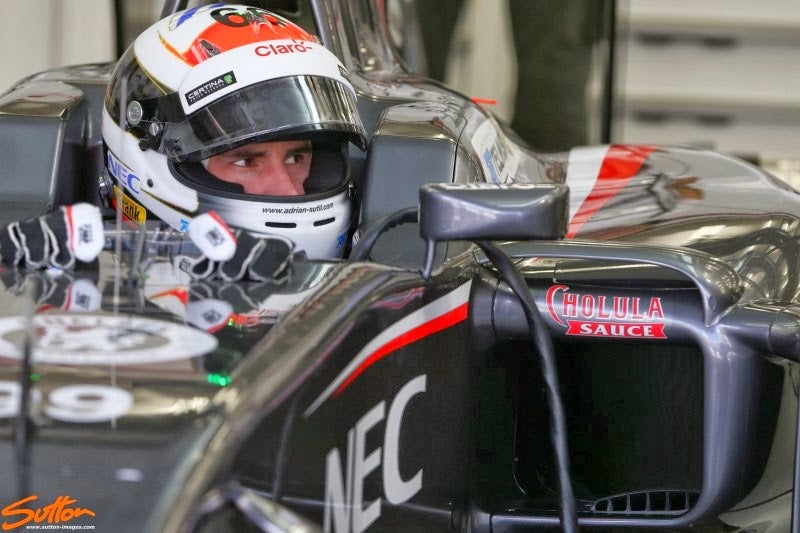
Interesting duct just inside the sidepod inlet
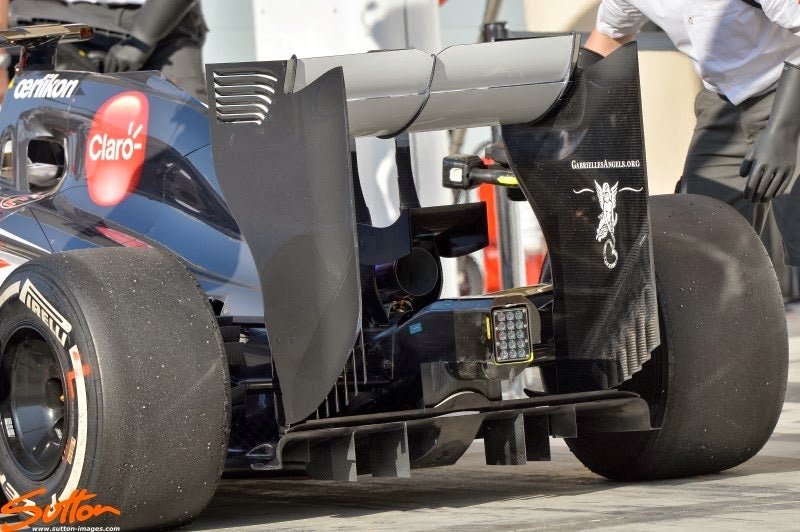
C33 rear end detail.
Toro Rosso
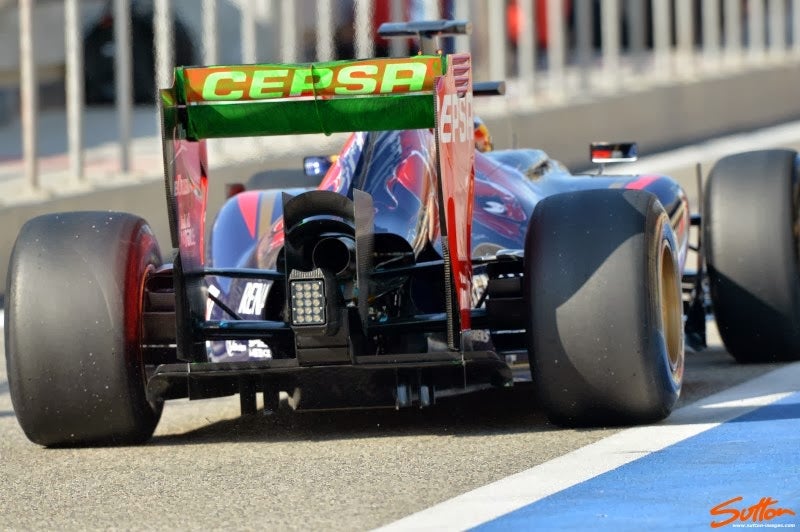
Toro Rosso rear end detail. Note the two element Y75 winglet and the lack of an additional rear wing support.
Williams
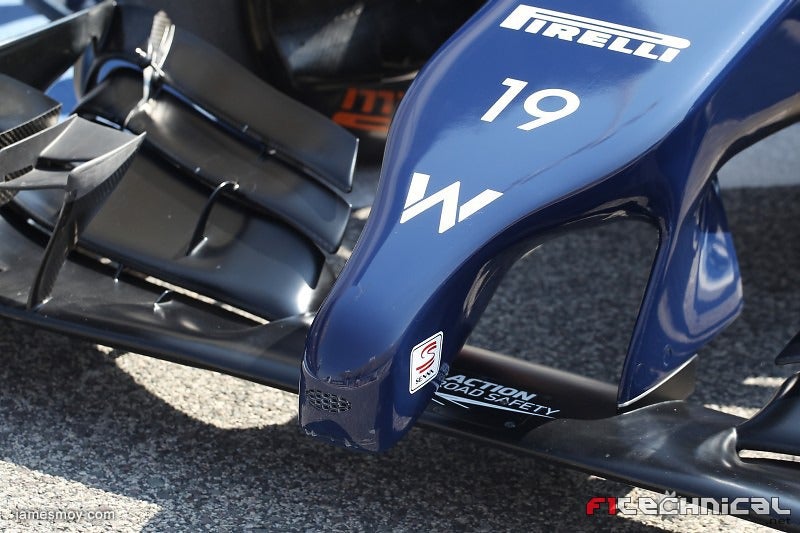
In my opinion the FW36 runs the best looking of the finger noses. Note the curved front wing supports that look like they also modify the flow of the air in preparation for getting round the chassis.
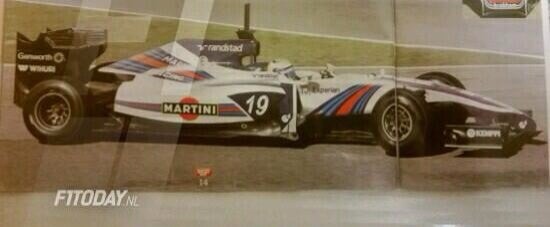
Also, here is a !!!error: Indecipherable SUB-paragraph formatting!!! of the Williams chassis with a Martini livery that they are rumored to be running in 2014 with a title sponsorship deal. Glorious.
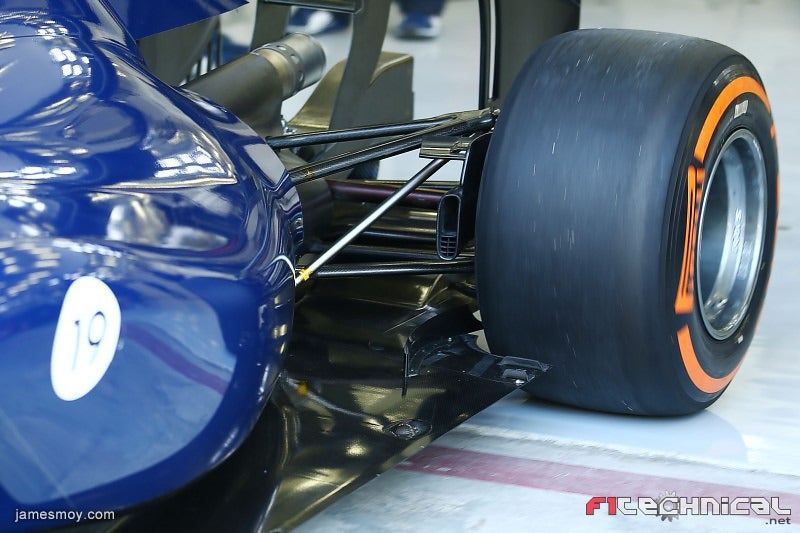
Note the small rear brake ducts and the elongated vertical strake on the floor leading to the inside tire sidewall in an attempt to reduce tire squirt ruining the effectiveness of the diffuser.
Caterham
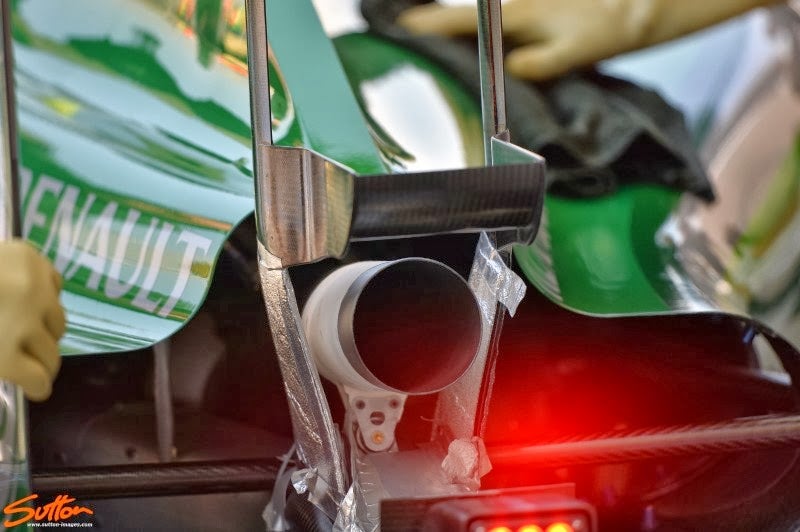
CT05 rear end detail. Most of the teams are running these Y75 winglets (Monkey Seats) just above or just below the exhaust in an attempt to encourage upwash that links the performance of the rear diffuser to the rear wing.
[Select images from !!!error: Indecipherable SUB-paragraph formatting!!! and !!!error: Indecipherable SUB-paragraph formatting!!! ]
 Axel-Ripper
> Tim (Fractal Footwork)
Axel-Ripper
> Tim (Fractal Footwork)
02/19/2014 at 20:25 |
|
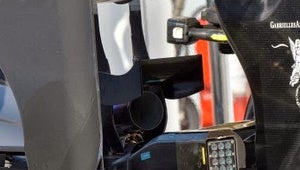
Interesting Monkey seat here. Cantilevered off the dual center wing supports.
 Pedro Rafael
> Tim (Fractal Footwork)
Pedro Rafael
> Tim (Fractal Footwork)
02/19/2014 at 20:28 |
|
Probably for telemetry.
 getchapopcorn
> Tim (Fractal Footwork)
getchapopcorn
> Tim (Fractal Footwork)
02/19/2014 at 20:29 |
|

Newey's at it again.

 WhiskeyGolf
> Tim (Fractal Footwork)
WhiskeyGolf
> Tim (Fractal Footwork)
02/19/2014 at 22:19 |
|
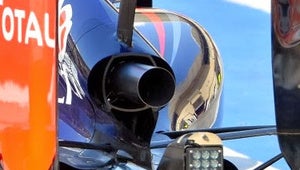
Something so bad ass about a single circular exhaust.
 wrblue11
> Tim (Fractal Footwork)
wrblue11
> Tim (Fractal Footwork)
02/20/2014 at 00:58 |
|
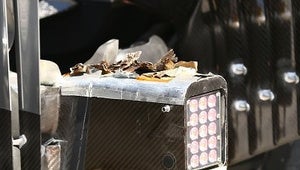
could this be the carbon fiber stressed under the heat of the exhaust?
 Tim (Fractal Footwork)
> wrblue11
Tim (Fractal Footwork)
> wrblue11
02/20/2014 at 01:04 |
|
It doesn't look like carbon, but you could be on to something. It looks like they placed a film of something on top of the crash structure, and perhaps it's deforming due to heat
 wrblue11
> Tim (Fractal Footwork)
wrblue11
> Tim (Fractal Footwork)
02/20/2014 at 01:09 |
|
the detail of these pictures are great and these articles are just fantastic, keep up the great work